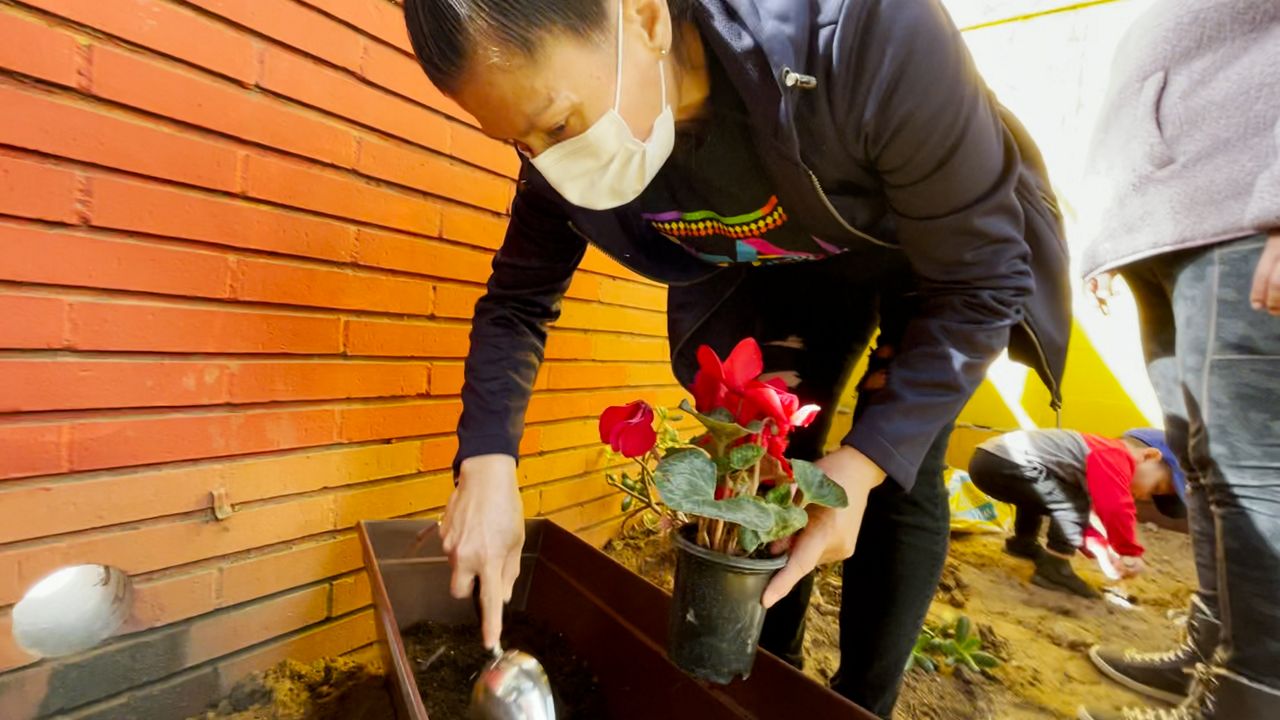LOS ANGELES — It is a quiet oasis away from the stresses of everyday life and for many immigrant families living near downtown Los Angeles, a space to focus on themselves.
“A lot of families in this area don’t have the opportunity to be by themselves in a space for themselves because multiple families may live in an apartment. Density is high in this area,” said Margarita Gomez, executive director of the Central City Neighborhood Partners, or CCNP for short.
It’s one of the eight community-based organizations that got money from LA leaders to a create Peace and Healing Centers. Over 40 groups applied for the funding.
“Often times, we think about recovery in the sense of financial recovery or going back to work, but we don’t think of recovery as a mental health issue,” Gomez said.
This center features a meditation corner, a reading area, and a place to color along with scheduled yoga classes and mental health workshops. All the centers must provide at least 20 hours per week of public programming and two monthly community events, but they can tailor their activities for either social, economic or environmental healing.

“Some of us are able to go to the mountains, go to the beach, but a lot of people in this community don’t have this opportunity or they don’t know or they come here and think it’s just work, work, work, provide,” Gomez said.
CCNP community members were recently given the chance to plant a garden with flowers, herbs and vegetable seeds. Kimberly Gomez was spending the day with her mom, who loves gardening.
“I think it’s very cool that they‘re trying to do a garden here outside to kind of beautify the street itself. It gives families just some way to interact with each other, get to know their community, make new friends,” she said.
“We believe that the people who (are) directly impacted by institutional and structural racism know best how to solve their own problems,” said David Price, director of Racial Equity for the LA Civil Rights Department.
The city says it carefully thought out where to place these centers. They are located across nine areas known as REPAIR zones. REPAIR stands for “Reform for Equity of Public Acknowledgment of Institutional Racism.”
“What we found are nine communities that represent 50% of all Angelenos living in poverty and 87% of people living in these zones are people of color,” Price said.
“These community-based organizations have already been doing this work without much support and so our job as a city is to figure out what are the ways that we can uplift our trusted partners, our community-based organizations to help further this cause of equity in the city.”
It’s adding a little green space to not only beautify the neighborhood but to help relieve anxiety, stress and pressure, even if just for a moment.
“It’s very easy to shut yourself down and like shut yourself out of the world when you’re going through a hard time and just knowing that there’s a community and a place that’s trying to open you to self-healing, I think is so beautiful,” Kimberly said.
Much like the garden, the city is planting seeds of its own, hoping newfound care and attention will uplift long neglected neighborhoods.
Let Inside the Issues know your thoughts and watch Monday through Friday at 8 and 11 p.m. on Spectrum News 1.



